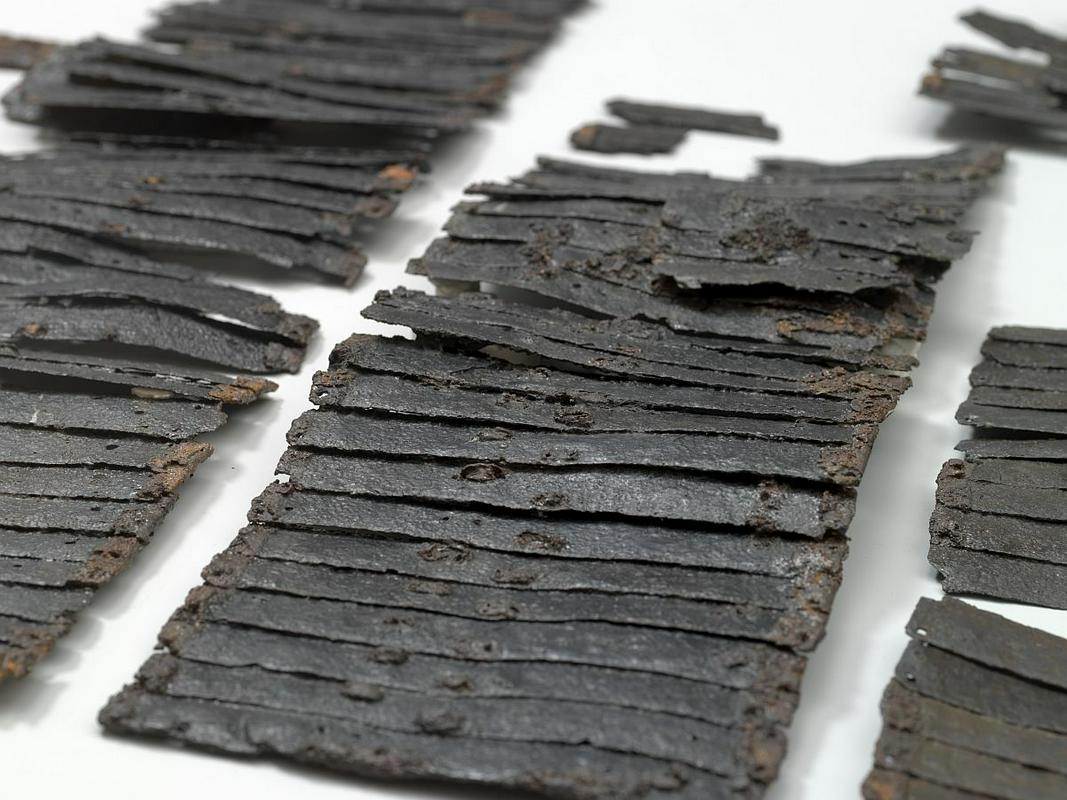
After being conserved and restored, the Gorenjska Museum will showcase the findings for the first time in the Khislstein Castle. The armour weighed 12 kilograms. It is made up of metal plates held together with strips of leather.
The two lamellar armours and the lance pole weapon called ango - military equipment of soldiers of the highest ranks from the second half of the sixth century - were unearthed in Kranj in a garden on Tomšičeva 38, in 2005.
The findings represent status symbols of the social and military elite of that time. The Gorenjska Museum explains that they confirm the strategic role of Carnium, the predecessor of today's Kranj, in Late Antiquity.
Two from the seven existing such armours in Europe
The ango is a symbol of the Franco-Alamanic elite. The lamellar armours represent symbols of the Byzantine elite and the elites of peoples under the influence and power of Byzantine. The ango is one of the rare pieces of material evidence of the presence of the Franks and their allies on Slovenia's territory in the middle of the sixth century. At the same time the lamellar armours speak of the powerful Byzantine influence on the world and the strong links with the Byzantine Empire, to which present-day Slovenia served as a northern border for most of the second half of the sixth century.
The lamellar armours are not exceptional finds only because of their symbolic meaning, but also because of their uniqueness on a European, and even world level. They are but only two of the total of seven almost completely preserved lamellar armours from the sixth and seventh centuries, discovered in the wider area between the Caucasus and Spain. Only a few of them, however, offer such reliable information for the reconstruction and appearance of the armours, as the ones from Kranj do.
N. Ar.; translated by K. J.

































































